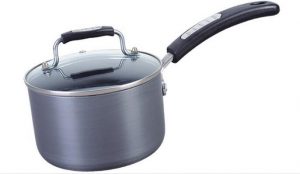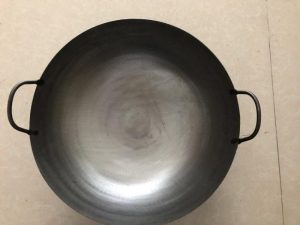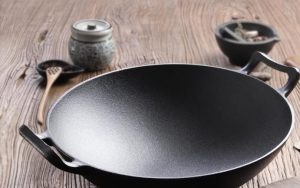Pot making material:
aluminum
Aluminum is a metal with excellent thermal conductivity. It will not rust and is resistant to many forms of corrosion. Aluminum generally exists in the form of stretched, die-cast or anodized. Stretched aluminum is formed by rotary stamping. Because of the soft nature of this metal, it is generally made into aluminum alloy with magnesium, copper or bronze to increase its strength.
Stretched aluminum is widely used in baking sheets, juice boards, cake muffin pans, soup pots, steam pots, pasta pots and even woks.
Die-casted ones are often thicker than stretched ones, making them more suitable for soup pots, Dutch pots, and heavy baking pans. Because aluminum die-casting produces microscopically visible pores in the die-casting process, it has a lower thermal conductivity than stretched pots.
Anodized aluminum naturally has a layer of aluminum oxide formed by electronic processing, which is hard and difficult to react with other substances. This technique is often used to make juice pots, chowder pots, baking pots and Dutch baking pots.

copper
The best pot is made of a thick layer of copper with good thermal conductivity and a thin layer of tin to prevent the copper from reacting with acidic foods. Copper pan or copper pot can provide the best thermal conductivity, but it is heavier and the price is higher. It needs maintenance and recasting from time to time. They are the best material for high-temperature heating and fast cooking as a soup pot.

cast iron
Cast iron cookware heats slowly, but once the temperature rises, it can withstand the high temperature. So it is an ideal pot for heating at hot temperatures. As a reactive material, it is prone to chemical reactions with highly acidic foods (such as wine or tomatoes). In addition, some foods such as spinach will turn black when cooked on red cast iron. Cast iron pan is a porous material that is easy to rust. As a result, the pot must be dried before use. Drying creates a thin layer of oil and carbon to protect the surface from sticking to the pan.

stainless steel
Stainless steel is an iron alloy containing a minimum of 11.5% chromium. Stainless steel mixed with 18% chromium and 8% nickel (called 18/8), 18% chromium and 10% nickel (called 18/10) is commonly used in kitchen equipment. The advantage of stainless steel is that it is corrosion resistant, does not react with acid and alkali food, and is not easily scratched or dented. The disadvantage of using stainless steel for cooking is that the heat conduction is quite poor. Therefore, stainless steel pots usually conduct heat with copper or aluminum on the bottom.

Carbon steel
Carbon steel cookware can be made into a thinner material than rolled or beaten while maintaining high strength. Can be warmed by rapid high heat. Carbon steel does not transfer heat like other materials, but this is also an advantage of being used as a wok and a paella: when a part of the pot is copper, the other parts are intentionally kept at a different temperature. Like cast iron, the carbon steel pan should be preheated and dried before use. Layer oil (preferably lard) on the surface of the pan and place the pan on the stove to heat it. After a period of use, the surface of the pan will turn black and become non-stick to the pan. Carbon steel pans are often used in Chinese woks.

